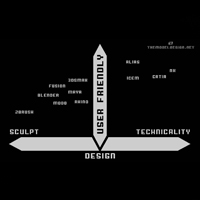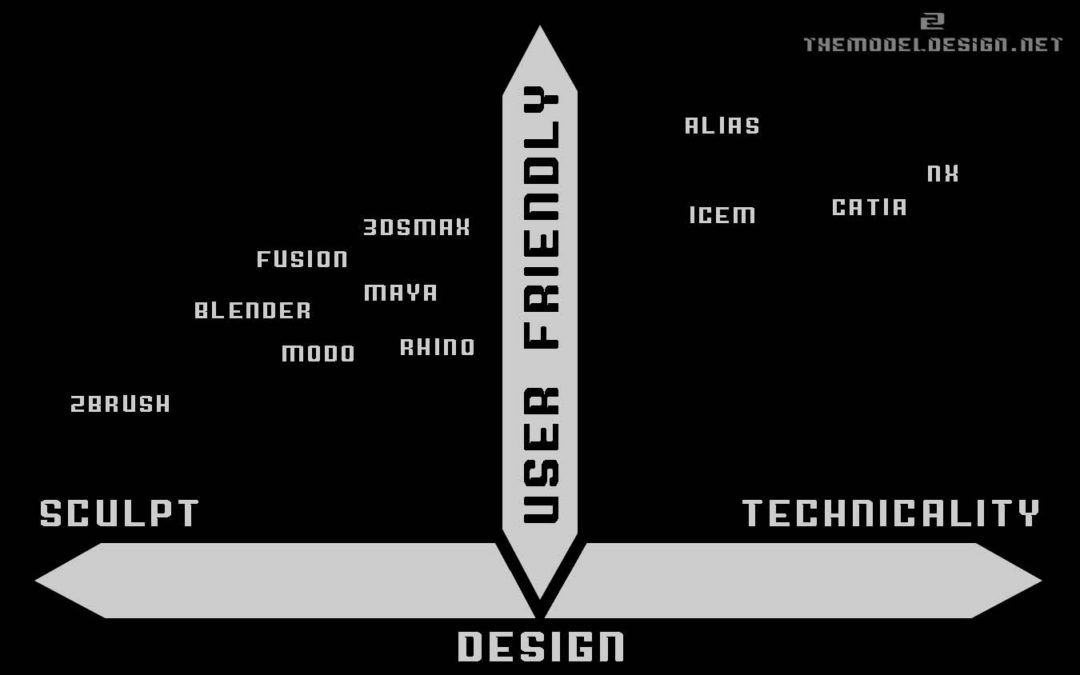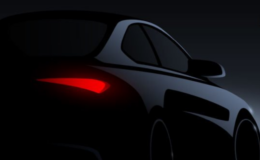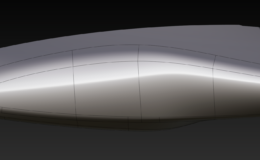I searched the Internet for the ultimate answer on what is the best software solution for automotive digital styling, as if I was a college student, a freshly graduate or just a guy who wants to shift his career and become an automotive 3D modeler. Results of my search not only didn’t answer my query, but also confused me bringing all kinds of dimmed results.
It was important to distinguish packages that are capable of delivering final data for production, from those which are used for quick ideation. The first ones work magic in the hands of professionals. The second ones can be used in initial project stages by designer or for fun by anybody.
Therefore, I decided to find the right answers and lay them out myself. But first things first – let’s reject what doesn’t belong here to dispel any confusion. Secondly, let’s narrow down to the most crucial results to find the answer to the question in contention: What is the best 3D software for high quality automotive digital design?
There are merely 4 best packages for automotive digital modeling available on the market today. They are: Alias by Autodesk, ICEM Surf or Catia (FreeStyle module) by Dassault Systemes and NX by Siemens (Class-A module)
Clear Doubts Away
Deceptively there aren’t many packages that can create surfaces to real Automotive Standards on the market today. To understand that, let’s dive deeper into the methodology of 3D modeling. First, let’s distinguish types of geometrical surfaces, and find out which type is most sought after in car design.
Solids are usually simple blocks of geometry which are very stable in 3D environment but very often can’t achieve sophisticated shapes. More complex geometry would be achieved by performing boolean operations. Usual applications of solid modeling would be mold design, where surface quality is secondary.
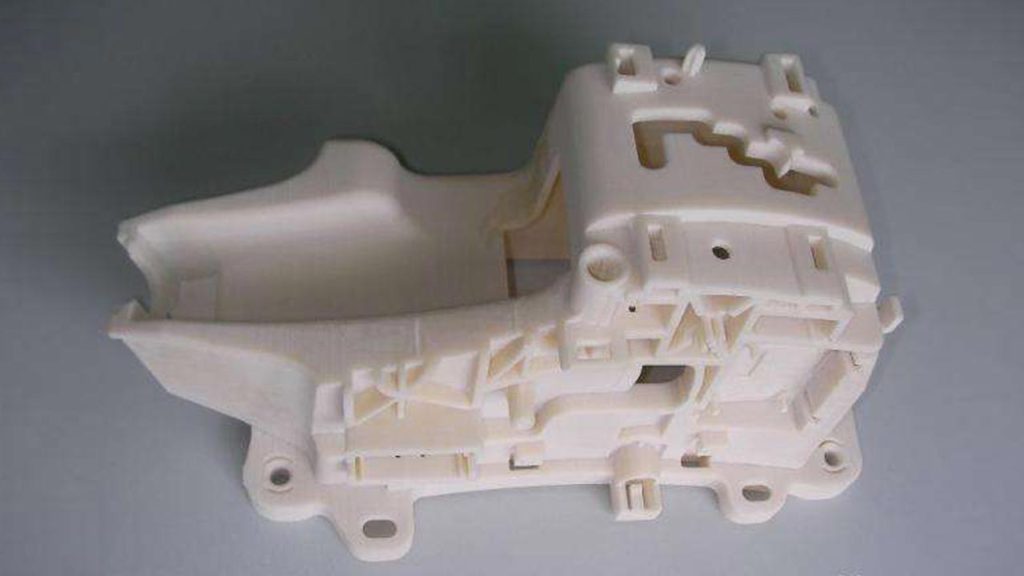
NURBS objects are what we are after is high quality surfacing. This technique creates results that might not be as geometrically stable as solids, but is nearly hurdles free and gives you both: freedom of sculpture as well as geometry quality control. Or in other words, you can style any shapes you can only imagine and, at the same time, confidently control their quality e.g. highlights. The only drawback is lower speed of surface construction.
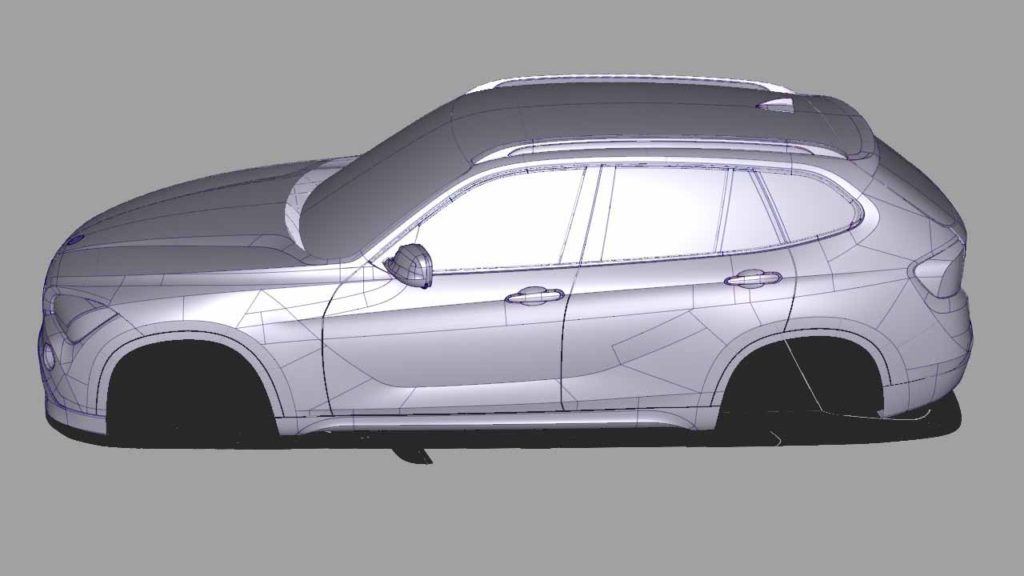
Polygon mesh geometry consists of many small triangle or quad particles. They resemble a net curtain that can be formed to different shapes. Literally any shapes can be quickly achieved by using this method of sculpting, but models are often of lower surface quality. Additionally, revoking history and going back to create e.g. a sharp feature line is virtually impossible without starting from the beginning.
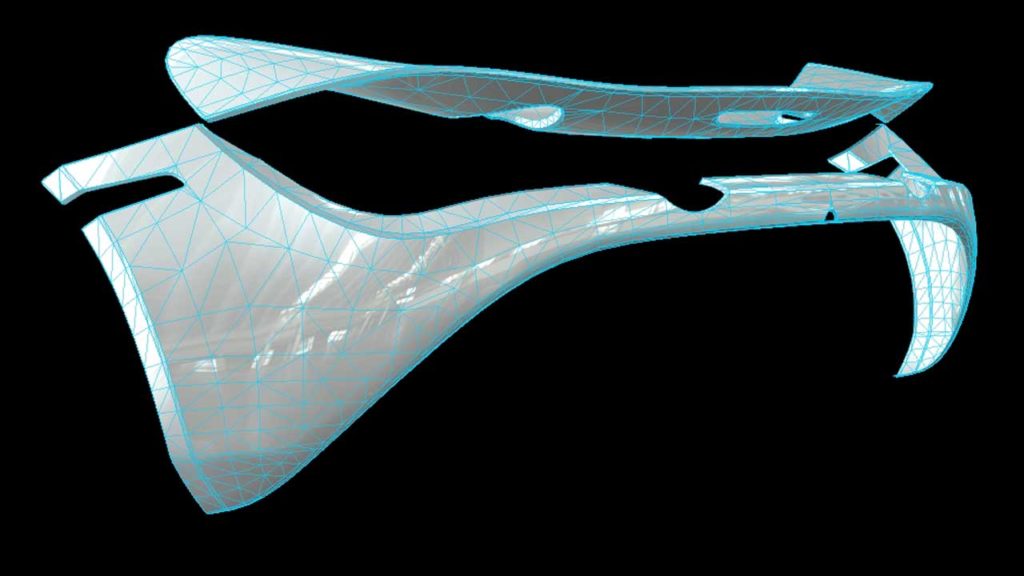
High Quality Automotive Surfaces
I could begin to list down all available 3D packages on the market capable of creation of solids, NURBS or polygonal meshes. That list could go on and on. But instead, let’s stop right here and focus on things that really matter – high quality surfacing capabilities for automotive industry.
NURBS is the no-compromise, best quality to flexibility solution. It blows the two other alternatives away. This method lets you combine all the best between design and engineering. On one hand, it allows you to focus on even most ingenious shapes and forms, if you are geared towards aesthetic aspects and work as a designer. On the other hand, it has tools to produce primitives for further development as well as very complex solid blocks for engineering requirements, if you are inclined towards precision and technicality. During the design stage, you create slab surfaces that stay interconnected and can be very easily detached and modified by pulling and pushing Control Points. Modifications can be carried out non-destructively for the rest of the model. You can very easily ease off the complexity of geometry without loosing integrity. You don’t work with thousands of points just to achieve a mediocre surface quality results.
What is “User Friendly”
As a car modeler, at some stage of your career you will be working on vehicle interiors. Imagine an interior that is no-user friendly in terms of ergonomics, layout and adaptation. Knobs and buttons are unconventionally located, the ashtray takes ten seconds to eject, your drink in a cup-holder nudges a gear lever every time you change shift up.
It is the same story here. 3D software packages should give you highest degree of UI freedom and maneuverability around your own design. It is called: being user friendly. Ideally, UI should be designed by designer – for designers, as only fellow designers would know and understand how to make the User Interface Intuitive. An exceptional UI lets you utilize the package to your advantages. It doesn’t let you overexert your mind by thinking what your next move should be, but rather supplements your workflow with clear tools layouts and processes. Not to mention the time saving opportunities, which are huge. Intelligently selected tools locations and short-keys combinations will save you tons of time.
The Ultimate Selection
Based on the two selection criteria: Modeling Capabilities and User Interface I have listed down four software packages that can hold a candle to the Automotive Surfacing requirements.
If you love easily available precision you will love Alias. This tool is a great choice for automotive, high quality surfacing. Users can easily adjust the degree of complexity of geometry depending on time available. Quick digital sketches as well as more developed models can be created with Alias. Geometry creation begins with simple surfaces, which are massaged and polished as projects develop. NURBS patches hardly ever get deleted, instead they can be sculpted and formed until satisfactory results are reached. Alias offers many technical tools and can also be used by engineers. UI excels competition and usually exceeds expectations of new users.
This is yet another great tool at your disposal. The ICEM surf comes with everything you need and more to assist you in high quality surface styling. All of the windows menus, sub-windows menus and side bars will give you almost endless possibilities. The pallet of rebuild options is something particularly worth mentioning. It seems like engineers at Dassault did a great job giving you a range of tools for very precise and effective curves and planes reconstruction. Everything else works as it should and is very intuitive. They are incredibly reliable and always of good quality. UI might require a bit more of ‘getting used to’ but it will play to your advantage if you a more of an old school and worked in older packages in the past.
You are going to get surrounded by tool icons, which I am sure can be customized to suit. Activating the A Class module will give many more styling capabilities. Curves and surfaces creation tools are based on the same, A-class modeling principles. Having said that though, it is easier to construct geometry than in Alias or ICEM but results lack accuracy. UI looks neat and workflow feels natural. Although it can get clattered during intensive periods of modeling, especially with the new Adaptive UI that pops up windows at you. NX feels a bit inferior to the three other options and tools limitations are exposed slightly faster. In general, it is a great alternative for people who need good styling software with some easing off.
CATIA V5 is a comprehensive PLM platform. It is so vast in fact, that for an average user its full possibilities might stay unfathomable. CATIA V5 mainly offers solid modeling capabilities, but with the A-class module extension, it can very well be the right tool for the Automotive Surfacing Job. It might not have the tool base equivalent of the one in Alias or ICEM Surf but icons are very intuitive and lead to easy-in-use, idiot’ proof tools. Another advantage of working in Catia V5 is the fact that the data wouldn’t need transferring, as studio engineers also work on the platform. UI is a bit of a dinosaur that requires some degree of wandering, which might hinder modeling efficiency.
